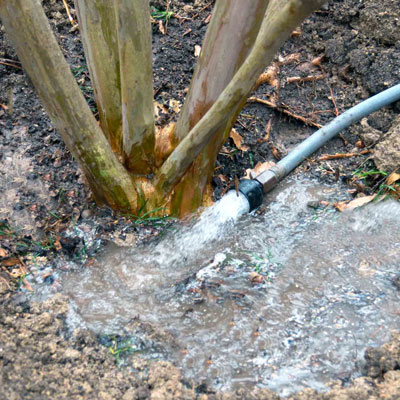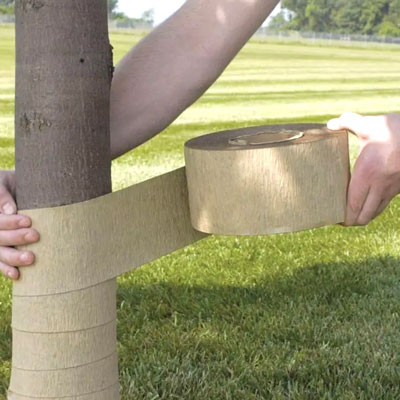Tiny Tips Explained
It’s easy, when you say something a hundred times, to take shortcuts and gloss over important details. That’s when a listener will step up and ask what you mean. That’s happened in the past week in three different cases. Let me explain.

“What do you mean when you tell us to ‘water deeply, then wait until the soil begins to dry before you water deeply again’? What does that gain?”
Your goal is to encourage deep root development to get plants, whether trees, shrubs, flowers or turf, through times of drought. If all you do is to sprinkle the soil on its surface, there will be little moisture farther down to encourage roots to grow more deeply into the ground as they seek water. That root growth is critical if you’re gone for a few days during a period of dry weather. So, you soak the soil, then you let it dry out to encourage the roots to grow down to the moisture. Water less often, but more at a time.
“Why do you tell us to water our lawns and landscapes a day or two before we fertilize, but then you tell us to water really well right after we feed?”
Fertilizers, whether organic or inorganic, contain mineral salts. If the soil is dry at the time of your feeding you run the risk of running the salt content up so high that it pulls the water back out of the roots by reverse osmosis. That will cause burning of the leaf tips and edges.
As far as watering immediately after you apply the fertilizer, that’s to wash the granules (assuming that’s what you’re using) off the leaves and into the soil. It’s also to dissolve the granules and get them into the soil in a diluted solution. That will allow the plants’ roots to take them in.

“I hear you talking about wrapping the trunks of newly planted trees. How critical is that (and why), and how long do I need to leave mine wrapped?”
As far as I’m concerned, it’s completely non-negotiable! At least with Shumard red oaks, Chinquapin oaks, Chinese pistachios, red maples and other species with thin bark.
Those trees are grown pot-to-pot in their nurseries. Their canopies shade their trunks. Only when they are planted into our yards do they receive full western exposure to the hot Texas sun. Unable to protect themselves fully they parch and begin to develop deep vertical cracks many inches long. The cracks will be on the south, southwest and especially the west sides of the trunks, and they usually will expose internal wood in the process.
Branches on the affected sides will become weak and sparsely leafed. This usually doesn’t show up for a year or longer, and by then there isn’t anything that can be done.
Your alternative is to protect the trees from the day they are planted by applying paper (or plastic) tree wrap from the ground up to the lowest limbs. Stretch it taut and it will hold itself in place. It will be able to expand as the tree grows large. After a couple of years, it will begin to fall away and can be removed.
